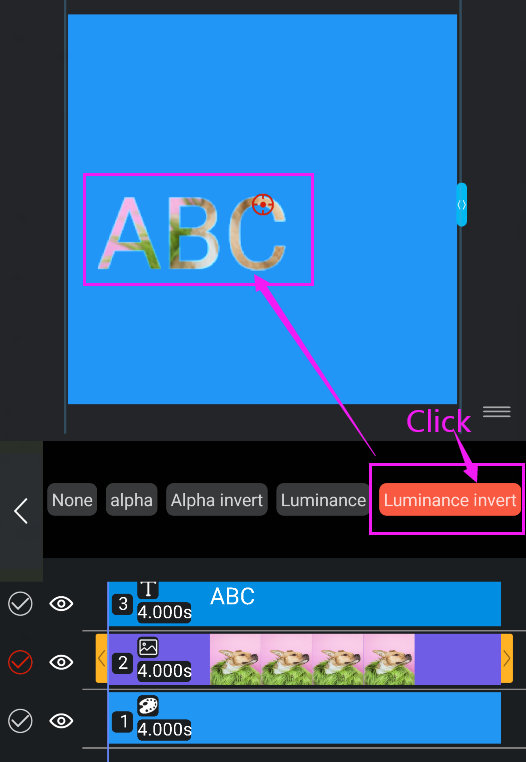About mattes
1. About alpha channels and mattes
General color information in After Effects is contained in three channels: red (R), green (G), and blue (B). In addition, an image can include an invisible fourth channel, called an alpha channel, that contains transparency information. Sometimes, such an image is referred to as an RGBA image, indicating that it contains an alpha channel.
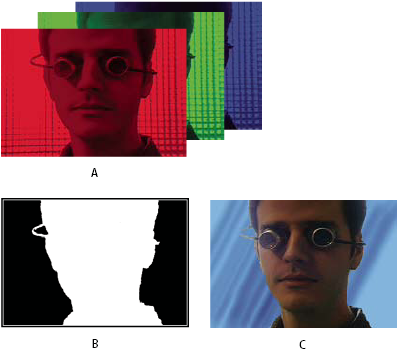
Channels at a glance
A. Separated color channels B. Alpha channel represented as a grayscale image C. Composite using all four channels with a background showing through transparent areas
Regarding the Alpha channel, white means completely opaque, black means completely transparent, and gray means partially transparent.
A matte is a layer (or any of its channels) that defines the transparent areas of that layer or another layer. White defines opaque areas, and black defines transparent areas. An alpha channel is often used as a matte, but you can use a matte other than the alpha channel if you have a channel or layer that defines the desired area of transparency better than the alpha channel does, or in cases where the source image doesn’t include an alpha channel.
2. Track mattes and traveling mattes
When you want one layer to show through holes defined by another layer, set up a track matte. For example, you can use a text layer as a track matte for a video layer to allow the video to only show through the shapes defined by the text characters. The underlying layer (the fill layer) gets its transparency values from the values of certain channels in the track matte layer—either its alpha channel or the luminance of its pixels.
Defining the transparency of a layer based on the luminance of the track matte’s pixels is useful when you want to create a track matte using a layer without an alpha channel or a layer imported from a program that can’t create an alpha channel. In both cases—using alpha channel mattes and using luminance mattes—pixels with higher values are more transparent. Usually, you use a high-contrast matte so that areas are either completely transparent or completely opaque. Intermediate shades should appear only where you want partial or gradual transparency, such as along a soft edge.
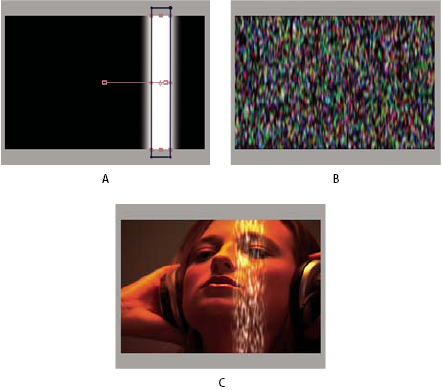
Traveling matte
A. Track matte layer: a solid with a rectangular mask, set to Luma Matte. The mask is animated to travel across the screen. B. Fill layer: a solid with a pattern effect. C. Result: the pattern is seen in the shape of the track matte. This is then composited over an additional image layer.
A track matte only applies to the layer directly beneath it.Adding a matte to the adjustment layer has no effect.
If you animate the position and other transformations of a track matte layer, the layer is called a moving matte. If you want to animate track mattes and fill layers with the same settings, consider adding adjustment layers.
After you copy or split a layer, if you only copy the matted layer, the copied layer has no matting effect; if the copied adjustment layer has a sublayer with the matted effect, the The layer still has a matte effect. Only the first half of the split layer has a matte effect, and the second half has no matte effect.
Convert a layer into a track matte
To add a matte to this layer, there must be at least one layer on top of this layer.
① Click to select the layer to be matted.
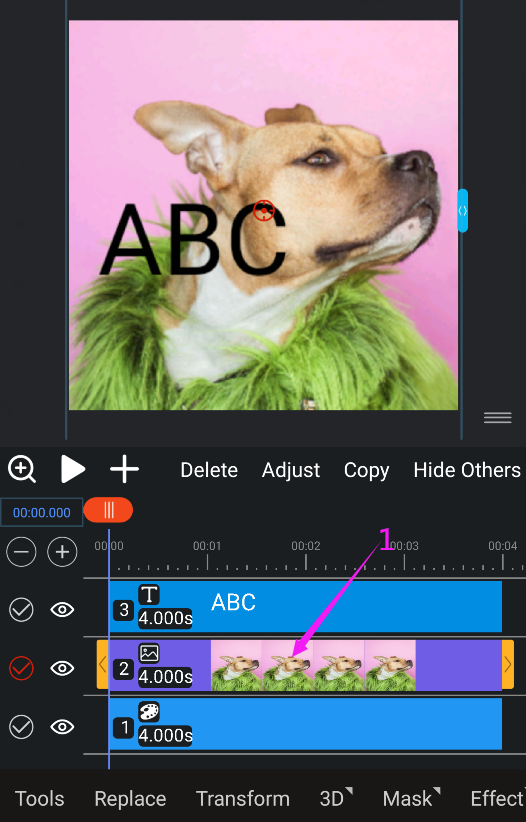
In the image above, layer 1 is a blue Color layer, layer 2 is a picture layer, and layer 3 is a text layer with black 'ABC'. Due to the stacking order of the layers, only the text layer and part of the picture layer can be seen, while the Color layer is blocked.
② Slide the menu below the layer to the right and click the matte button.

③ Select one of the following options from the menu that appears above to define the transparency for the track matte:(See The effect of converting a video layer into a track mask).

None No transparency created; next layer above acts as a normal layer.
Alpha Opaque when alpha channel pixel value is 100%.

Alpha Invert Opaque when alpha channel pixel value is 0%.
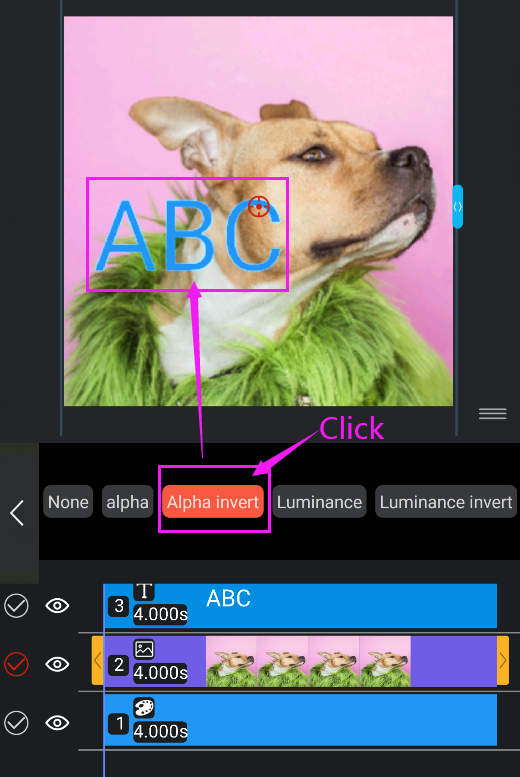
Luminance Opaque when the luminance value of a pixel is 100%.
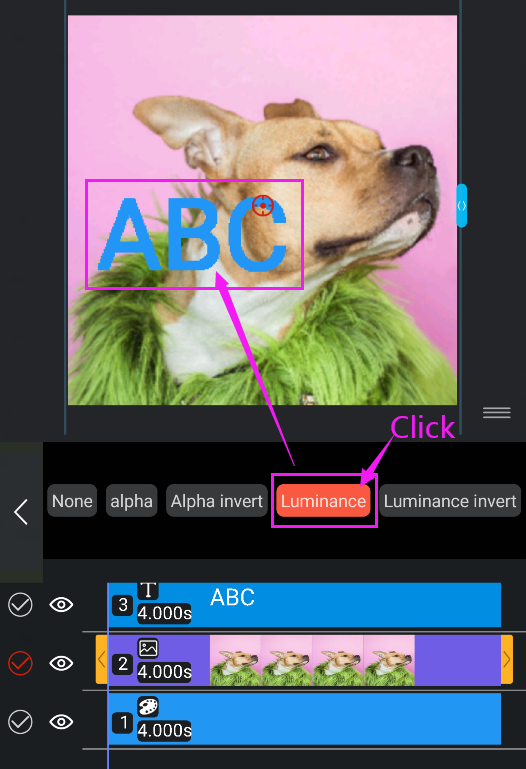
Luminance Invert Opaque when the luminance value of a pixel is 0%.
